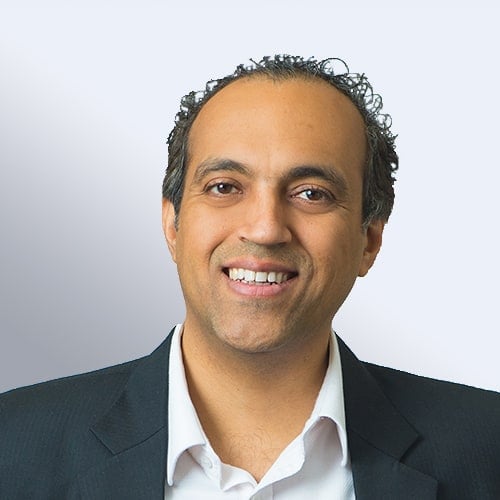
In April 2025, the Trump administration announced a new round of tariffs targeting imported cars, metals (steel and aluminum), and various auto components from multiple trading partners.
A 25% tariff on fully assembled cars took effect on April 3, while duties on 150 categories of auto parts are scheduled for May 3. While the situation continues to evolve, with the administration recently enacting a 90-day pause on many reciprocal tariffs, the newly imposed tariffs still pose significant risks for the U.S. P&C insurance industry.
With increasing repair and replacement costs, Property & Casualty (P&C) insurers are now seeing increased pressures, which are likely to impact premiums, claim payouts, and underwriting margins in the months ahead.
While tariff announcements do not trigger immediate mid-policy changes, they do prompt insurers to re-evaluate pricing models, loss reserves, and supply chain dependencies. These policy shifts may also have ripple effects on broader economic conditions, including inflation and labor costs.
This blog explores how the recent tariffs may impact U.S. P&C insurers, including its impact on premiums and underwriting profitability, and the strategies available to mitigate short- and long-term impacts in the process.
Reach out to discuss this topic in depth.
The impact of increased tariffs on claims costs
As per the American Property Casualty Insurance Association (APCIA), about 60% of replacement parts used in U.S. auto shop repairs are imported from Mexico, Canada, and China. Hence, when tariffs on imported cars and auto parts are imposed, insurers are likely to see their costs spike. For P&C insurers, the main consequences include:
- Materials-driven cost inflation
- Auto repairs: Steel and electronic components are central to the auto industry. If tariffs raise input prices by 10–25%, carriers may see a 5–7% increase in overall parts cost
- Property repairs: Construction materials such as steel, aluminum siding, and Heating, Ventilation and Air Conditioning (HVAC) units become more expensive, leading to a 3–5% hike in rebuilding costs for homeowners and businesses
- Longer repair times
- These disruptions resemble those seen during the COVID-19 pandemic, when supply chain bottlenecks, labor shortages, and inflation led to extended repair timelines and increased loss costs
- Secondary inflationary effects
- Higher raw material prices often push up labor and logistics costs as well. Even a modest rise in the broader inflation rate can significantly affect an insurer’s loss costs over a 12–24-month horizon
- Claims reserving pressures
- Actuarial teams will need to increase reserves if tariff-induced inflation persists, ensuring that funds set aside for future claims accurately reflect mounting repair and replacement expenses
In essence, tariffs can magnify claims severity by making every step of the repair process – materials, labor, and logistics – more expensive.
“Typically, tariffs are a one-sided risk to our loss costs. We actually have what we think at this time, percentages would be if certain tariffs happen now. Those (data and assumptions) will ultimately change, and we’ll be able to kind of flex our models. It will depend on the countries, the products, the magnitude of severity, but ultimately, we will price those into our indications.”
- Susan Patricia Griffith – President and Chief Executive Officer, Progressive (During Progressive’s 4Q’24 earnings call)
Quantifying the impact on P&C Insurers’ premiums and profitability
Impact on Direct Written Premiums (DWP): Since rate changes are subject to regulatory approvals and often lag real-time economic shifts, insurers might gradually raise premiums by a few % points at the renewal stage, to recoup rising claim costs. Overall, the premiums are expected to rise by 5-10% as a result of the tariffs and could come into effect by the end of 2025 and early 2026.
Impact on profitability: The US P&C insurance market returned to underwriting profitability in 2024 for the first time since 2020. It posted an underwriting gain of ~$22 billion and the combined ratio improved significantly to 96.6% in 2024. However, due to the factors discussed above, the increased tariffs will now put upward pressure on auto and property claims which account for a bulk of claims costs for the majority of US-based P&C carriers.
Overall, we expect a 7-10% rise in claims costs, primarily driven by increased costs for auto and property repairs, plus a modest broad-based inflation effect. This is likely to push the combined ratio back into an unprofitable territory in 2025.
How can Insurers react and adapt?
- Rate filings and pricing strategy
- Data-driven adjustments: Insurers can compile evidence such as part cost estimates, labor rate inflation, and historical claims trends to support their filings
- Product segmentation: Insurers can also differentiate rates or coverage terms for certain auto and property segments that rely heavily on imported materials
- Use of analytics: Insurers can use predictive analytics to anticipate claims cost increases and gradually adjust premiums
- Strengthening TPA relationships
Third Party Administrators (TPAs) play a crucial role in helping P&C insurers manage claims efficiently, particularly during periods of cost volatility. With tariffs increasing the cost of materials and labor, TPAs can help control claims expenses through established networks of repair shops, contractors, and parts suppliers. TPAs can also help insurers mitigate the effects of rising costs through:
- Negotiating better rates through deep vendor networks
- Leveraging artificial intelligence (AI) and automation to reduce cycle times and rental reimbursement costs
- Sourcing high-quality aftermarket or recycled parts to reduce reliance on Original Equipment Manufacturer (OEM) imports
- Enhanced reserving and loss forecasting
- Frequent actuarial reviews: Tariff fluctuations can be rapid, so periodic estimates of loss cost trends can keep reserves aligned with actual risk
- Scenario modeling: Running best-case, base-case, and worst-case scenarios can help senior management and state regulators understand the financial impact of various tariff timelines or rates
- Diversifying risk and use of reinsurance
- Portfolio shifts: Some insurers may rebalance their books away from heavily impacted lines or regions, distributing exposures to mitigate large-scale cost surges
- Reinsurance treaties: Traditional or alternative risk transfer methods (like catastrophe bonds) can provide a safety net if claims inflation escalates rapidly
- Strengthening consumer engagement
- Policyholder outreach: Insurers should proactively educate policyholders about premium changes and available options
- Offering flexibility: Flexible deductible structures and bundling auto policies with home or life insurance could improve customer retention
Moving forward into 2025 and beyond: The newly announced tariffs in early April can have meaningful implications for U.S. P&C insurers. By driving up the cost of auto repairs, property reconstruction, and associated services, tariffs can place upward pressure on claims costs.
Over the short term, insurers may experience a squeeze on profitability if premiums lag the rising expenses tied to materials and labor inflation. In the medium to long run, carriers generally offset these cost increases through targeted rate filings, refined underwriting guidelines, and strategic partnerships with TPAs and repair networks.
The best defense for insurers is a proactive stance: monitoring macroeconomic signals, analyzing real-time claims data, and adjusting reserves and rates quickly. Those that act swiftly and transparently, both with regulators and policyholders, are more likely to maintain stable profitability, even amid a turbulent trade environment.
Ultimately, adaptability, data-driven risk management, and careful optimization of supply chain relationships will remain vital as tariffs reshape the P&C insurance cost landscape.
If you found this blog interesting, check out our research on Leading 50™ Property & Casualty (P&C) Insurance Technology Providers 2024 which covers leading P&C technology providers across underwriting (pricing and rating) and claims. If you are ready to adopt the modern operating model powered by agentic AI and transition to Systems of Action (SOA) architecture, check our research on Systems of Action: Enabling Agentic Revolution in the Enterprise.
For more information regarding the US administrations tariffs and to see what the US tariffs mean for the global services market, please visit https://www.everestgrp.com/us-administrations-tariffs/
If you have any questions, would like to gain further expertise in the latest tariffs and how this’ll impact P&C Insurers, or would like to reach out to discuss any other related topics in more depth, please contact Abhimanyu Awasthi ([email protected]), Dinesh Singh Udawat ([email protected]) or Ronak Doshi ([email protected]).











